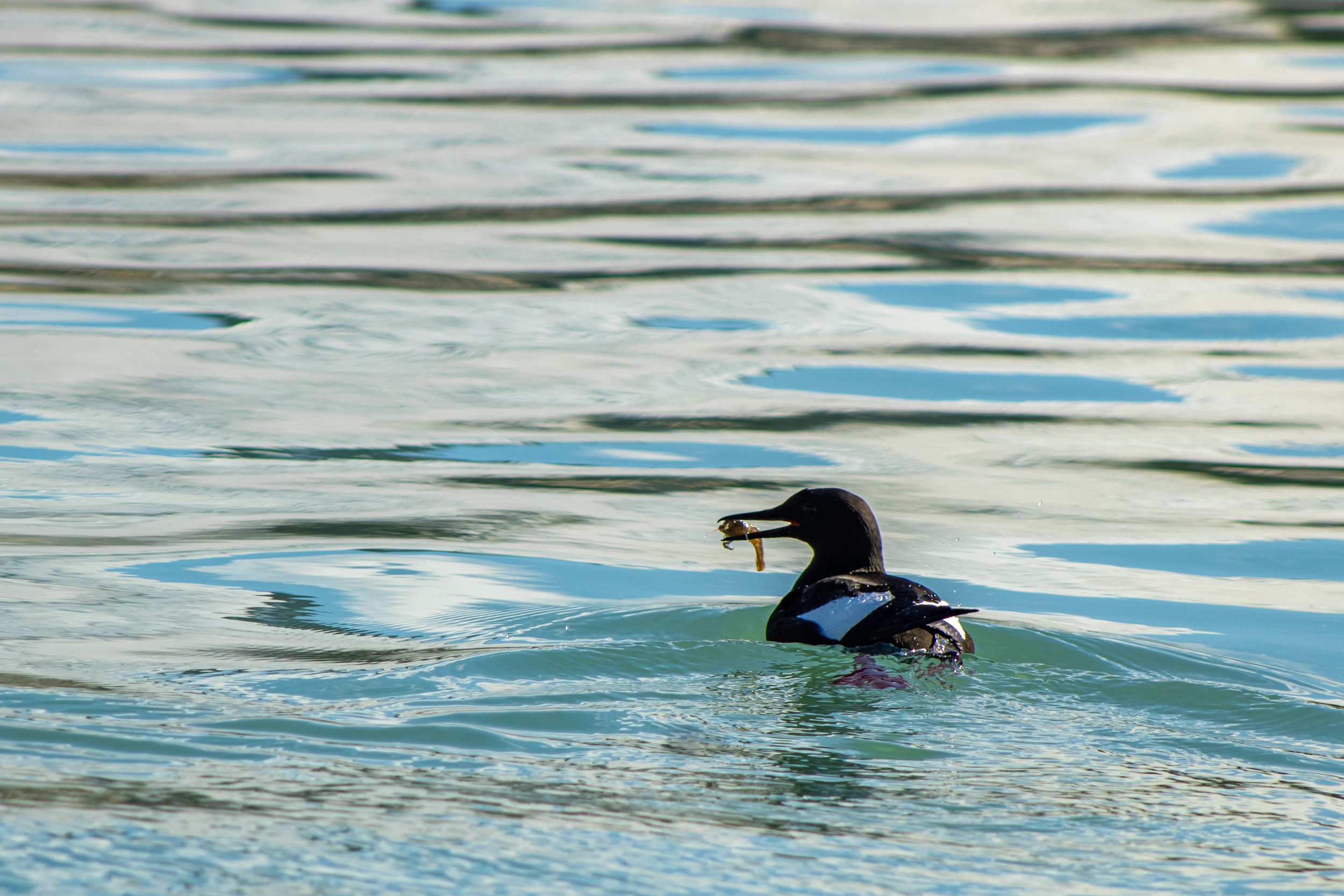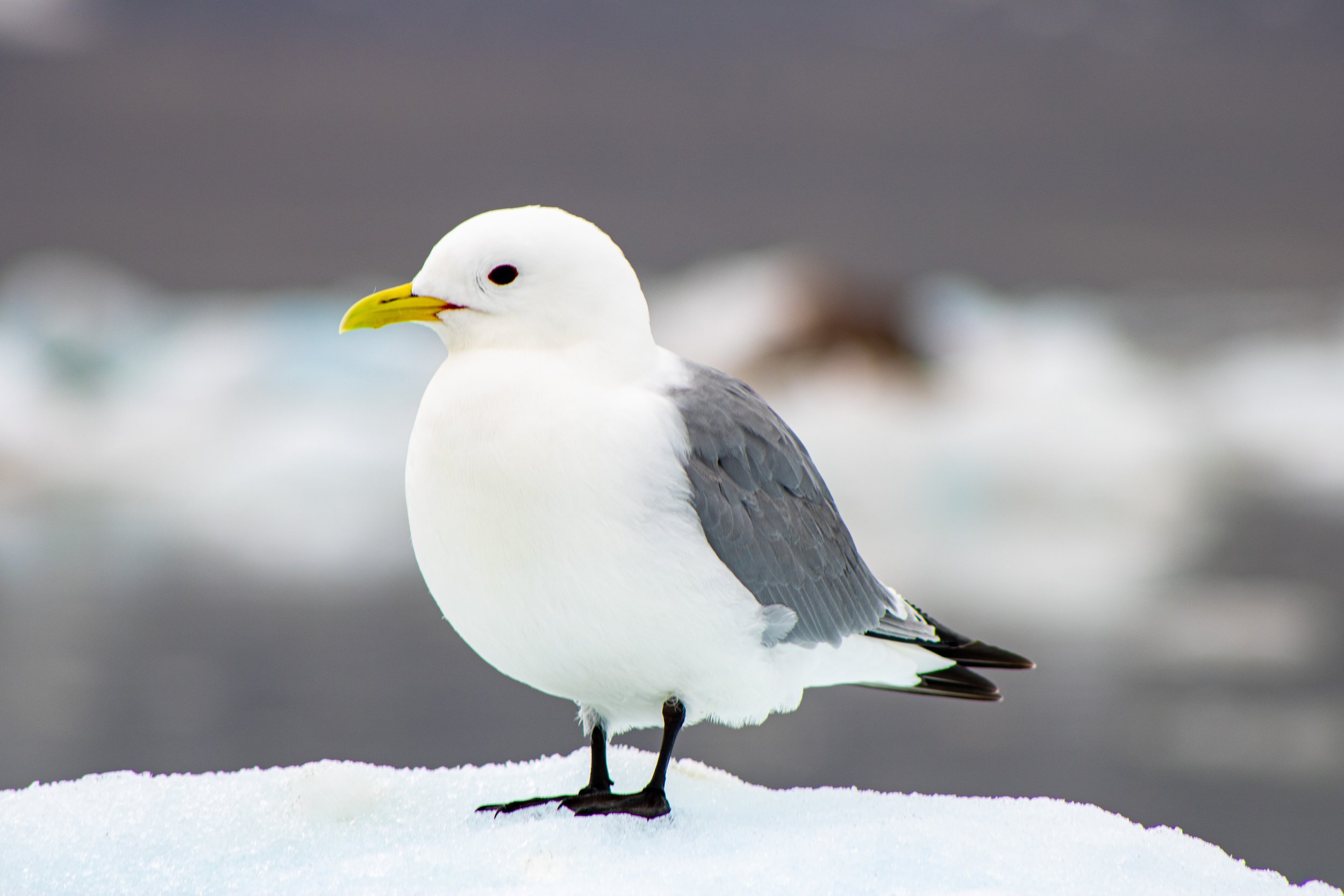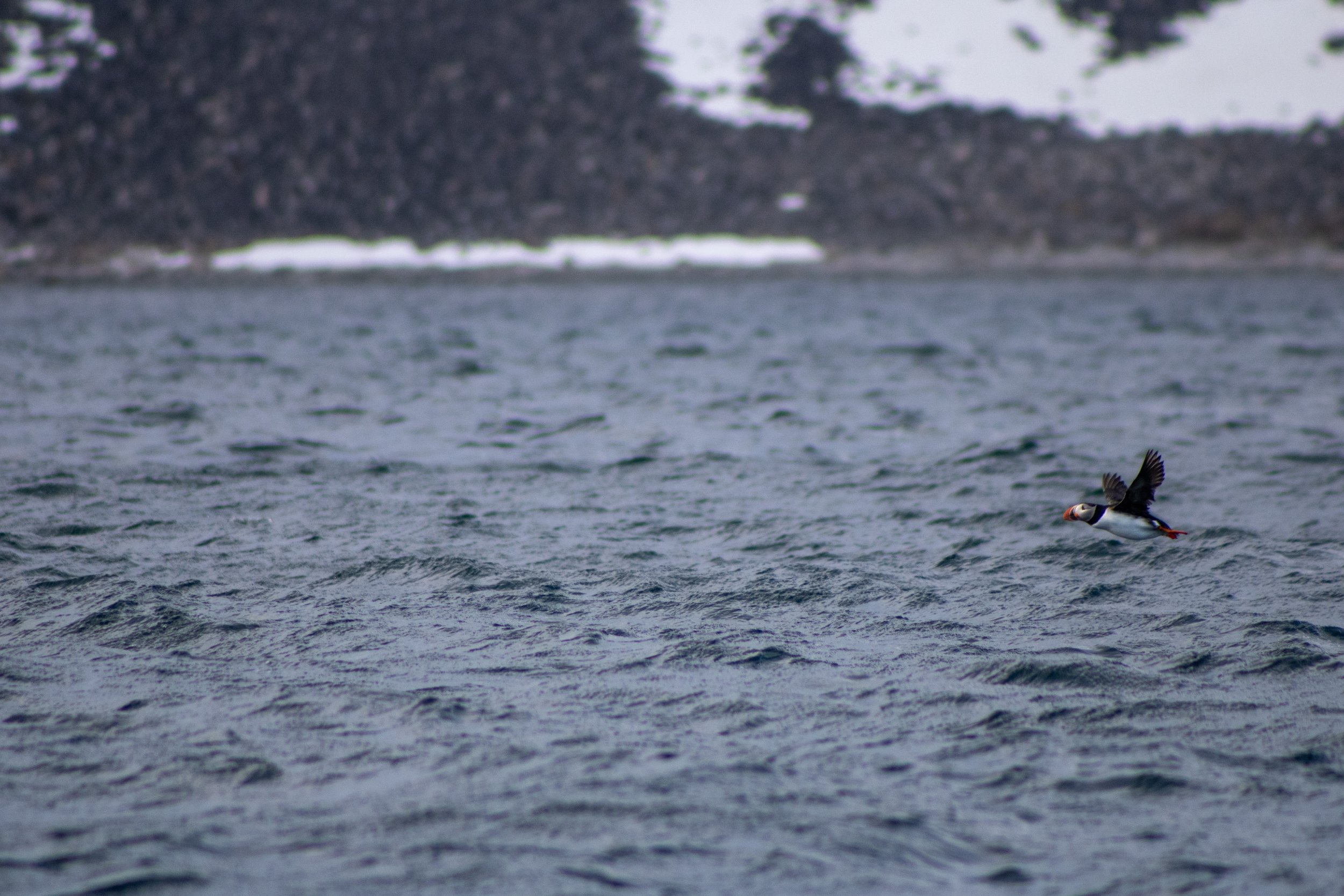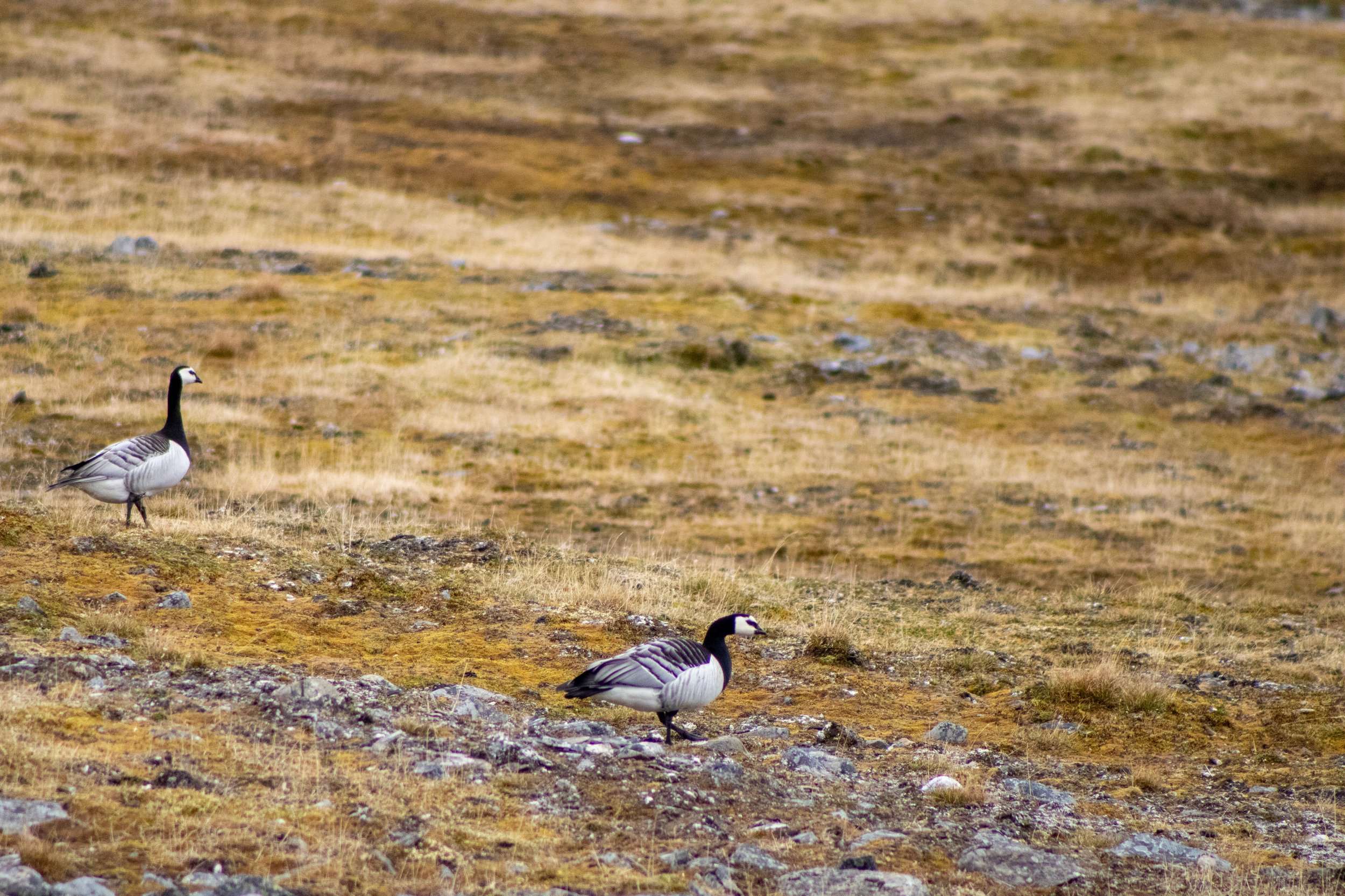Polar Blog Series Part II: The Arctic
Chapter 6: The Birds of Svalbard
We first became intrigued with birds on our visit to Antarctica. It was whole new world; you’re introduced to so many different species in the polar regions. So we headed to the Arctic with excitement, not only for polar bears and whales, but for the birds.
Kittiwake on an ice berg
There was so much to learn. I remember standing out on the deck on our first night departing from Longyearbyen, the photographer explaining a few different species to me. We saw Northern Fulmars and Puffins on that first night in abundance. It was my first time seeing a puffin since I visited Alaska as a kid. They were both so different than anything we saw down south.
Puffin taking off from the water
The company that ran our trip is called Arctic Tern Expeditions. It was an apt name, as we saw dozens of Arctic Terns, if not more, while on our journey. We learned about these birds in the Antarctic, because we also saw them there: while the Antarctic Terns stay solely in Antarctica, the Arctic Terns migrate back and forth between the two poles. These amazing birds travel around 50,000 miles per year, roughly the equivalent of twice the Earth’s circumference. On our expedition we also learned these animals spend 95% of their lives in sunlight, as they spend time in each polar region during the “summer.”
Barnacle geese looking for food
The Arctic is filled with incredible birds. As I already mentioned, the highly social kittiwakes hang out on icebergs near glaciers to wait for calvings, so they can swoop down on the shocked fish. Common Eiders filter for food on the sea floor using their beaks. The Little Auks build their nests on sheer cliff faces. And the Rock Ptarmigan, which we also saw along the side of a cliff while hiking, winters in Svalbard, despite the subzero temperatures. The birds were all around us all the time. And it was the bird nests that brought us the foxes.




